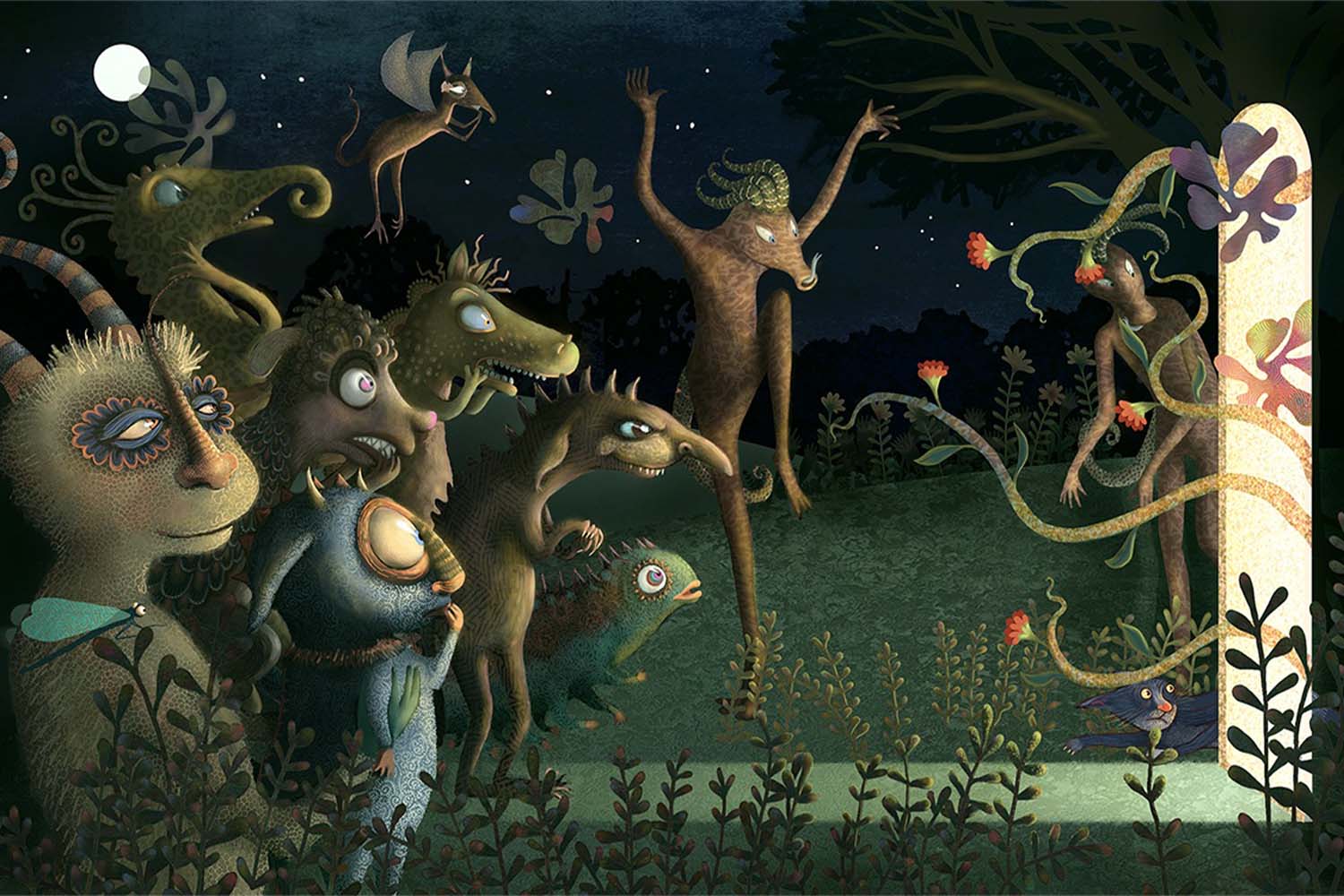It is our pleasure to introduce you to the story and work of Rebelle's Featured Artist, Gretchen Deahl. Gretchen has worked for 39+ years as a professional illustrator, graphic designer and web site designer, combining both traditional drawing methods as well as the latest graphic technology tools. After graduating from the University of the Arts in Philadelphia, she began her career creating illustrations for diverse fields until she finally found her passion in children's book illustration. Let's explore the perks and challenges of illustration together.
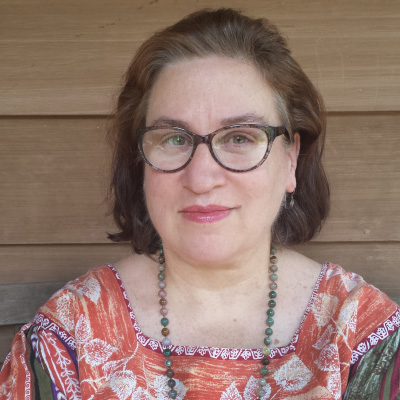
What sparked your interest in illustration and when did you start exploring this field of work?
While I was still a young child, around the ages of 5 or 6, I think. My father was an endlessly curious man and a great believer in discovering and exploring new things – the How, When and Why of things. Both he and my mom were avid readers and collectors of art. They were both amateur artists as well: my dad was a watercolor painter and my mom was a sculptor. I remember as a little kid, regularly sitting on the living room floor surrounded by illustrated books and magazines. One favorite at that time was my dad's collection of "The American Heritage" book series. Long before I became a reader, I would tell myself stories based on the illustrations that I found within their pages. And even though I was given toys on holidays, my favorite gifts were books. One pastime was drawing and writing about the adventures of my twin sister and my pet hamsters, "The Adventures of Max and Morris", told comic book style. My mother also read to us. One of my absolute favorite books was “The Hobbit” by J. R. R. Tolkien, though at first I imagined Bilbo Baggins as a rabbit, probably because of his large, furry feet. My love of stories, reading and fantasy started at that point.
I was forever creating odd characters and was even encouraged in my early teens to "decorate" the pantry walls with paintings of my (early) monsters. So thanks to my parents, I was encouraged to pursue my desire to draw, paint and write. Later, after graduating from high school, my parents continued encouraging my dreams to become a professional artist by supporting my education at "The Philadelphia College of Art", now known as the "University of The Arts", where I earned my Bachelor of Fine Arts (BFA) degree in Illustration, with honors.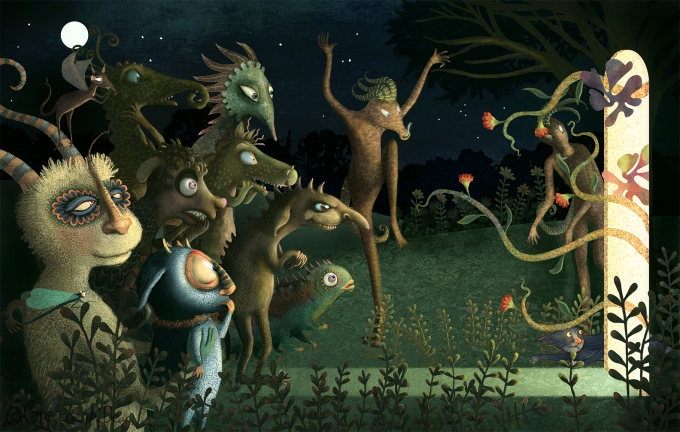
In addition to drawing illustrations, are you the author of the stories as well? If not, how would you describe the cooperation between author and an illustrator.
I have illustrated several stories, but not always directly with an author. In one instance, an art director acted as the go-between with an author, accompanied by the author’s notes. This allowed me freedom to create the visual worlds for the stories. That, I understand, was standard practice in the picture book industry. Another time, I communicated directly, via email, with an author, who was originally from Peru, on a bilingual picture book. In that case, we shared our visions of what it should look like. Both methods worked well for me.
I love reading. Well written stories are often transformational for me. I feel an absolute joy and gratitude when a story can move me to consider other points of view, or enlarge my understanding of something. Creative writing is a pleasure as well, but does not come quite as easily to me as illustration. Plenty of stories percolate within my imagination, but finding the right words to write has proved challenging. I am still learning this process. I have a renewed appreciation for writers of all kinds.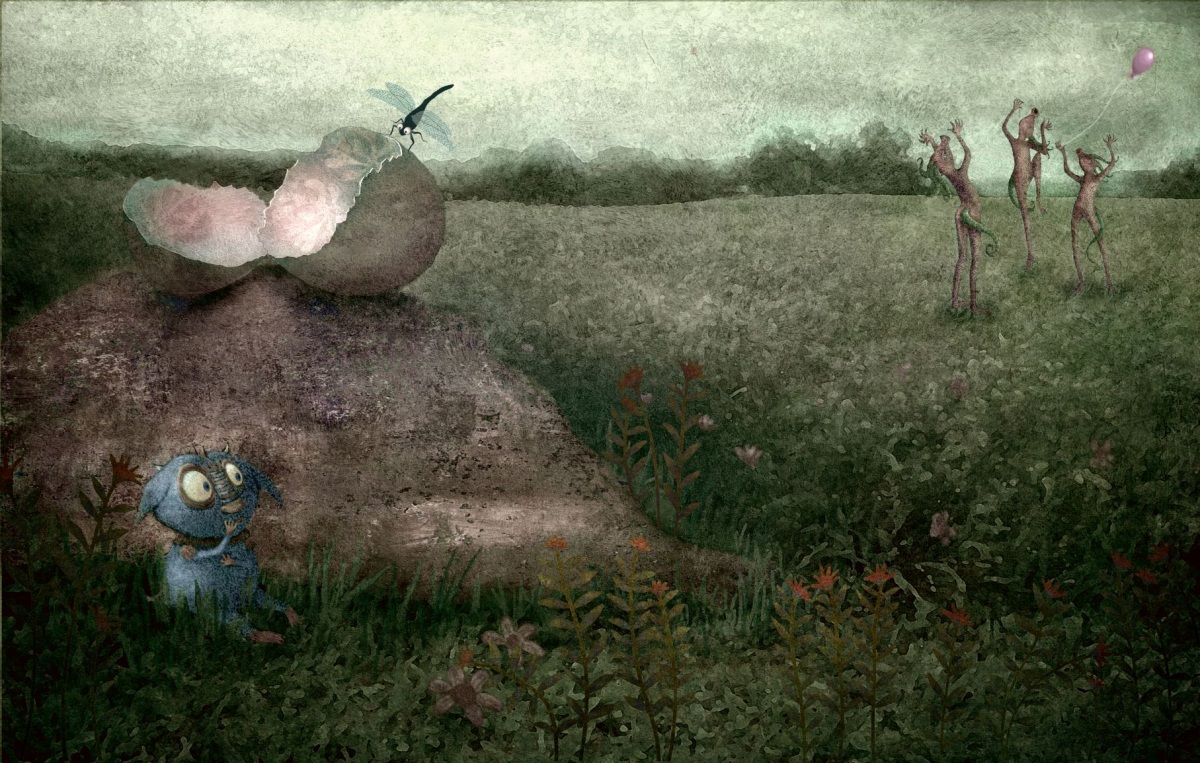
Some of your most favorite subjects to draw are monsters. What is the story behind this?
That's a great question, thanks for asking. I think I create "monsters" versus people and animals for several reasons. Firstly, though I find the human face and physique beautiful to draw, I didn't wish to be limited to just that. I did a lot of live drawing of the human form in my college days. My imagination, however, demanded that I leave just the "seen" world, and wished to express itself in other ways. I am a great appreciator of art of all kinds, including abstract painting, Cubism, etc. Creating new "unseen" worlds and their inhabitants has become my passion.
Secondly, I wanted to create beings that transcend race and ethnicity. I want children and adults to see each creature and it's reactions and emotions as it is, not making judgments or assumptions based on race, ethnicity or gender. I believe that it frees each creature to be purely who/what it is, expressing its nature without society imposing any restrictions or values upon it.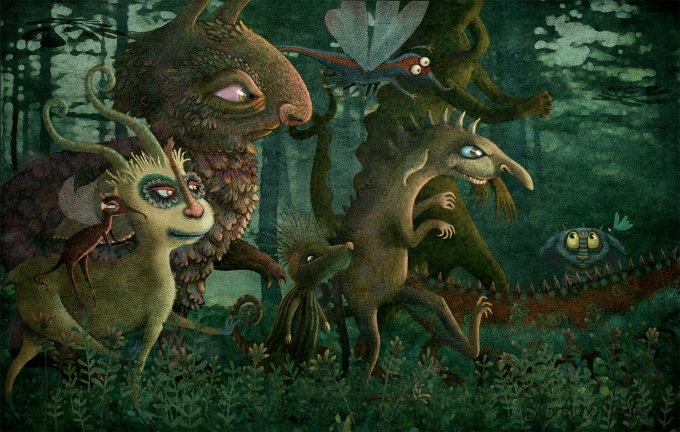 Thirdly, I think monsters get a bad rap. They are often considered hideous, vile creatures, whose intent is just to frighten or hurt people and cause mayhem. My "Guardian Monster" series of 26 monster illustrations focus on how they can help both children and adults adjust and relate to a confusing world and watch over them. Each monster has distinct personalities and characteristics that offer their "person" both protective and beneficial powers, as well as information and instructions about their;
Thirdly, I think monsters get a bad rap. They are often considered hideous, vile creatures, whose intent is just to frighten or hurt people and cause mayhem. My "Guardian Monster" series of 26 monster illustrations focus on how they can help both children and adults adjust and relate to a confusing world and watch over them. Each monster has distinct personalities and characteristics that offer their "person" both protective and beneficial powers, as well as information and instructions about their;
- Potential (behavior) Issues (they are monsters after all)
- Rules of Monster Etiquette
- Favorite Foods and Places.
They can be found on my website as well as in my Etsy shop.
What is the process of illustrating a picture book? How does it go from an idea to a finished work on sale in bookstores?
Traditionally, the work begins with a thorough reading of the story, then working with an art director to create a "storyboard" with bare bones sketches of how the story should break into individual pages and/or spreads, (including which parts should be illustrated). Developing each individual character's look and feel is usually next where an overall color scheme is chosen. Then begins a multitude of back and forth stages with the art director, where the illustrations go from sketches to initial drawings to final artwork. In the books that I have illustrated for other authors, the art director took my artwork and placed them within their own designs, including choosing the fonts and adding the text, etc... I was the illustrator who created the artwork. The rest was left in the hands of the art director, including the printing and production.
With my latest picture book, I am in charge of the whole thing, writing, illustrating, designing, marketing and distribution. I am learning as I go.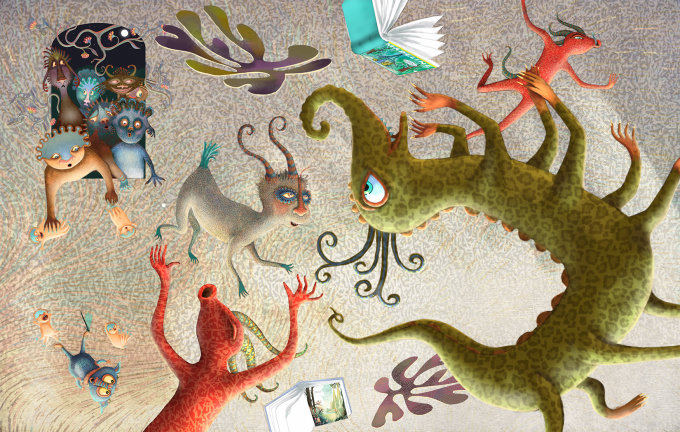
Describe your working technique and how you came to perfect it. What tools do you use?
In the "olden" days, before digital painting was available, I used the traditional methods of drawing and painting, applying pencil, ink, watercolor, etc... to paper or canvas. Later, I began scanning the pencil or ink drawings into my computer and painstakingly "stitching" them together digitally, before adding digital color. I had owned a Wacom tablet for years, but hadn't put it to much use at that point, because every digital program that I had previously tried didn't work well for drawing in real time. I would draw or paint a line, then wait for the program to catch up.
Then came Rebelle. I couldn't believe my eyes when I first encountered this magnificent painting software. Digital paint, pencil, ink, on papers and canvases with "real" texture, etc.. that behaved like the traditional media AND which allowed me to draw and paint in real time! I cannot sing its praises enough and have made a point of telling all of my fellow traditional painters about it. The program also allows me to create and apply stencils, introduce found patterns and textures, etc. This has allowed me to move beyond traditional media and experiment to my hearts delight. I should add that the freedom with which I can try out new ideas and boldly experiment with different techniques, without the fear of wasting paper or paint has been a game changer! It is the only way I create artwork now.
How many times do you tend to draw a character until you are happy with it?
That all depends on the complexity of the finished character. I try to create multiple angles (front, back, three quarters, sitting, standing, flying...) of many as well, to keep their movement dynamic within the story. These days, I start from scratch within Rebelle, so I sketch/paint out their overall shapes first, adding varying degrees of color, patterns and textures later, as their personality develops. Each character MUST have a personality and a name as they "grow". That part is especially fun. The grumpy, sneaky ones tend to be my favorites.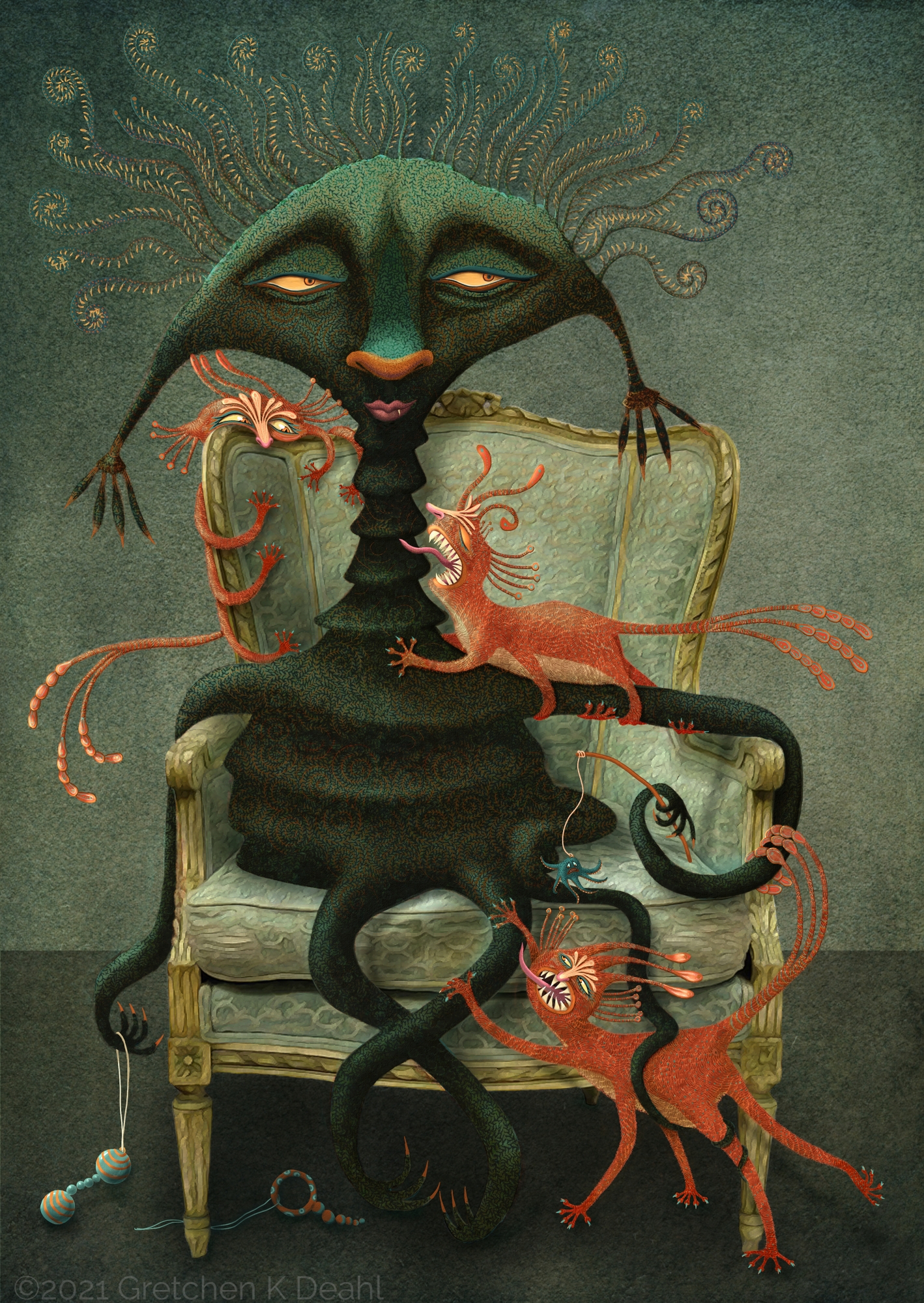
When you don't have something to physically look at in different lighting and angles, you have to try and imagine how it should look. Maintaining a believable likeness of the same character from different angles and lighting can also be challenging, and takes time and often multiple attempts before you get it right. Some characters have evolved into completely different forms over the creation of the story, while a few change only in minor ways. That is part of the fun. I also enjoy “world building” – imagining and creating different places, times of day, different seasons, being underwater, flying/falling, etc... from different perspectives and points of view. That requires a lot of imagination power, finding applicable photo references when needed, and above all, patience! For me at least, living with and working on a story over a long period of time, creating a brand new world, and populating it with beings, is an act of love and sheer determination.
What’s the one thing an illustrator must keep in mind when illustrating a children’s picture book?
Hmm, that's a good question. Ultimately, since my goal is to write and illustrate a story, I want to produce a coherent, flowing and interesting narrative in both language and pictures. A bit of a mystery adds spice as well. I like being surprised by an ending. I write simply, but I don’t write for any particular age group. I want my story to appeal to everyone: young children who need to be read to, older children who can read for themselves, and adults who simply enjoy picture books.
In the case of my current book, the drawings came first. I had a general story in my mind and drew the first scene of a long line of monsters marching through a forest. Because I am mostly a visual person, I began painting different scenes that I wanted to illustrate. Over time, the story unfolded and evolved. That's probably not the best way to start a picture book, but that's how my imagination works. It reminds me of a time long ago, when my mother, who was a teacher of third graders, asked to borrow some of my pencil drawings. She showed them to her young students and asked them to write a story about what they saw. The results were intriguing but very different. Some told stories about loss and feeling lonely. Others told stories about magic and adventure. It was quite enlightening to see how different children understood and related to the same artwork. I never forgot that.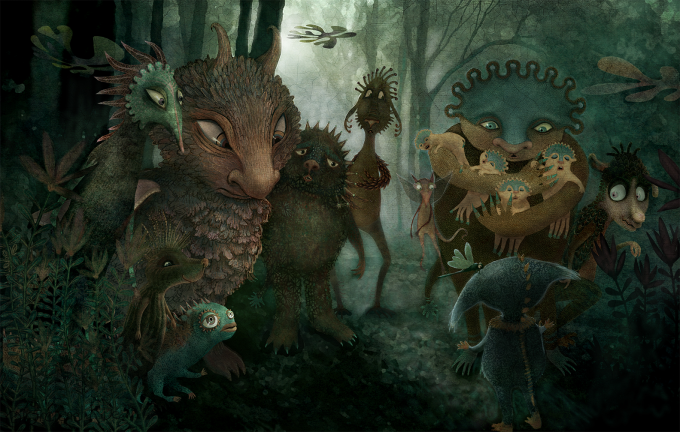
What do you hope children take away from your illustrations?
The simple joy of the human imagination!! As cognizant beings, our thoughts are not limited to just the "real" world, and “reality” in general. We can, through our imaginations, build other worlds, other ways of seeing and believing. I wish this for both children and adults. Always be curious, try to view the world through another's eyes and take a walk in their shoes. Be kind and compassionate to those who are different from you. Find pleasure in learning new things and meeting new people. Look with wonder at our beautiful planet and the amazing plants and animals that live here with us. Take care of each other.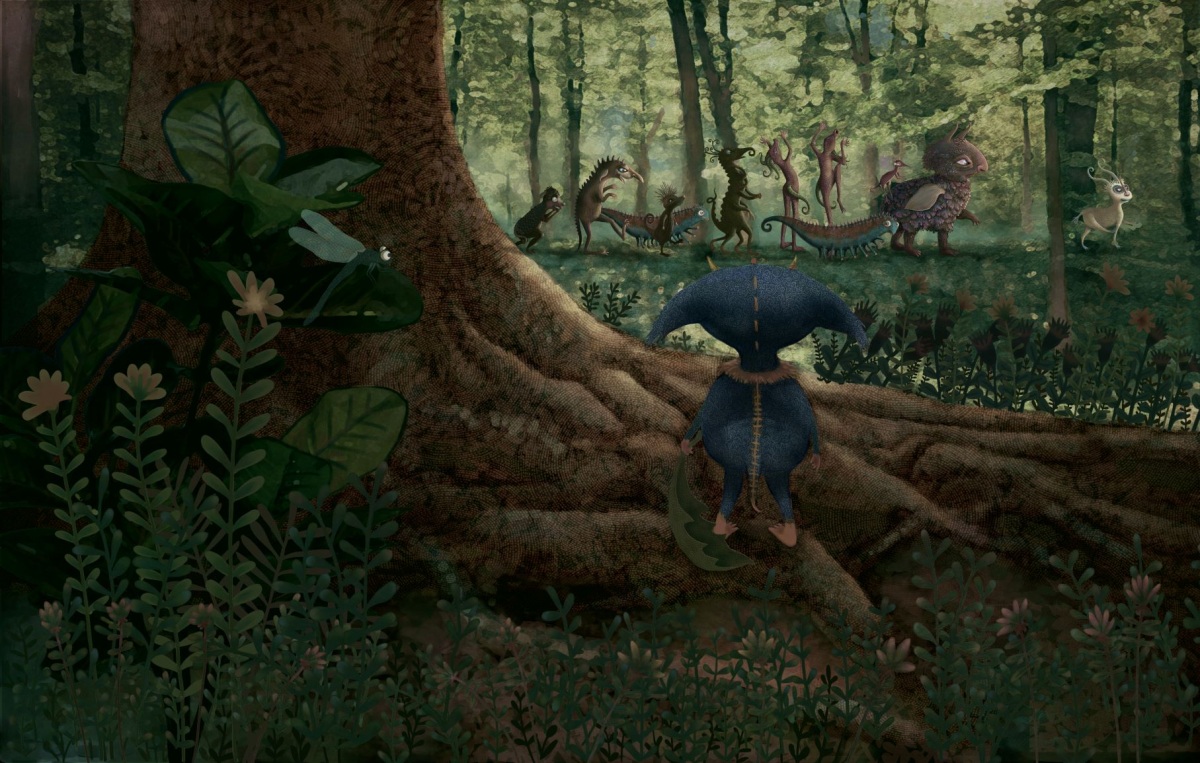
What are you currently working on? When can we expect to see your next book on the book shelves?
My current picture book project is called "The Mysterious Monster March". Initially, my book will be available as a digital download on my website during a limited market evaluation, prior to production and distribution via other channels. I believe the launch of the digital version of my book will be available before the end of May 2022. I am considering offering my book as a digital product, and a digital flip-book, enhanced with additional content, including multimedia. Paperback and hardcover editions will follow, date TBD.
Thank you, Gretchen, for finding time to answer our questions. We wish you best of luck with finishing your upcoming book. We are sure many children will be astonished by the stories of the monsters and it will become a favorite book for many.
It has been an honor to answer your questions. Thank you so much for your interest in my artwork.
-----
Learn More about Gretchen Deahl
Featured Artist Portfolio:
https://www.escapemotions.com/featured-artists/gretchen-deahl
Website:
https://gretchenkdeahl.com/
Social Media:
https://twitter.com/GretchenDeahl
https://www.facebook.com/WhereMonstersMeet
https://www.instagram.com/gretchenkdeahl/

